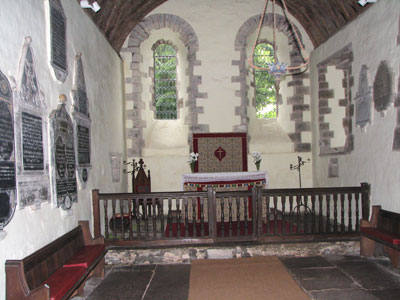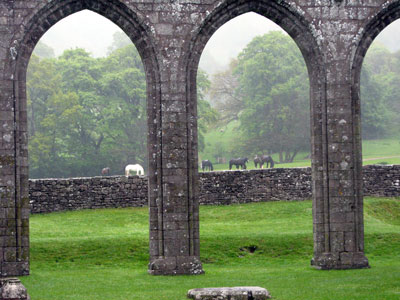Church of St. David in Wales
For three days in May 2009, my wife, Rose, and I were shown around the Abergavenny part of Wales by good friends of ours from England, Betty and Alan Madden. The Angel Hotel was our base (July ’10, pg. 48).
On our way to see Brecon Beacons National Park in the Black Mountains (where, unfortunately, morning mist and overcast weather obscured many of the wonderful views), we stopped at the most memorable place we would visit on our Wales mini-tour: the Church of St. David.
About eight miles north of Abergavenny, we turned from a main road onto the narrow lane that snakes through the Vale of Ewyas. Soon, and near the ridge-top Offa’s Dyke Trail (for hiking), we were at the tiny hamlet of Llanthony, really just two or three buildings in a small, grassy clearing bounded by open fields, low stone walls and steep, forested mountains.
One side of the clearing holds the little, one-room, stone Church of St. David, the Patron Saint of Wales. It was built in the 12th century on what is believed to be the site of St. David’s sixth-century monastic cell.
The outside of the building is not impressive, but the interior immediately captures your spirit with its chapel-like feel. It has an arched wooden ceiling, two small green leaded windows over the altar and whitewashed walls that hold a number of ornate and engraved historical stone markers.
On the other side of the clearing are the remains of a 12th-century Augustinian priory. Part of the ruins has been restored into a charming, four-bedroom B&B, with rooms furnished as they would have been in the days of the priory. There is a bar and café as well.
Attached to the hotel are the remaining ruins — tall, classic stone arches in need of repair but adding a dramatic punch to the countryside. It would be hard to visit this site without feeling a part of history.
JOE PHELAN
Lincoln, CA


